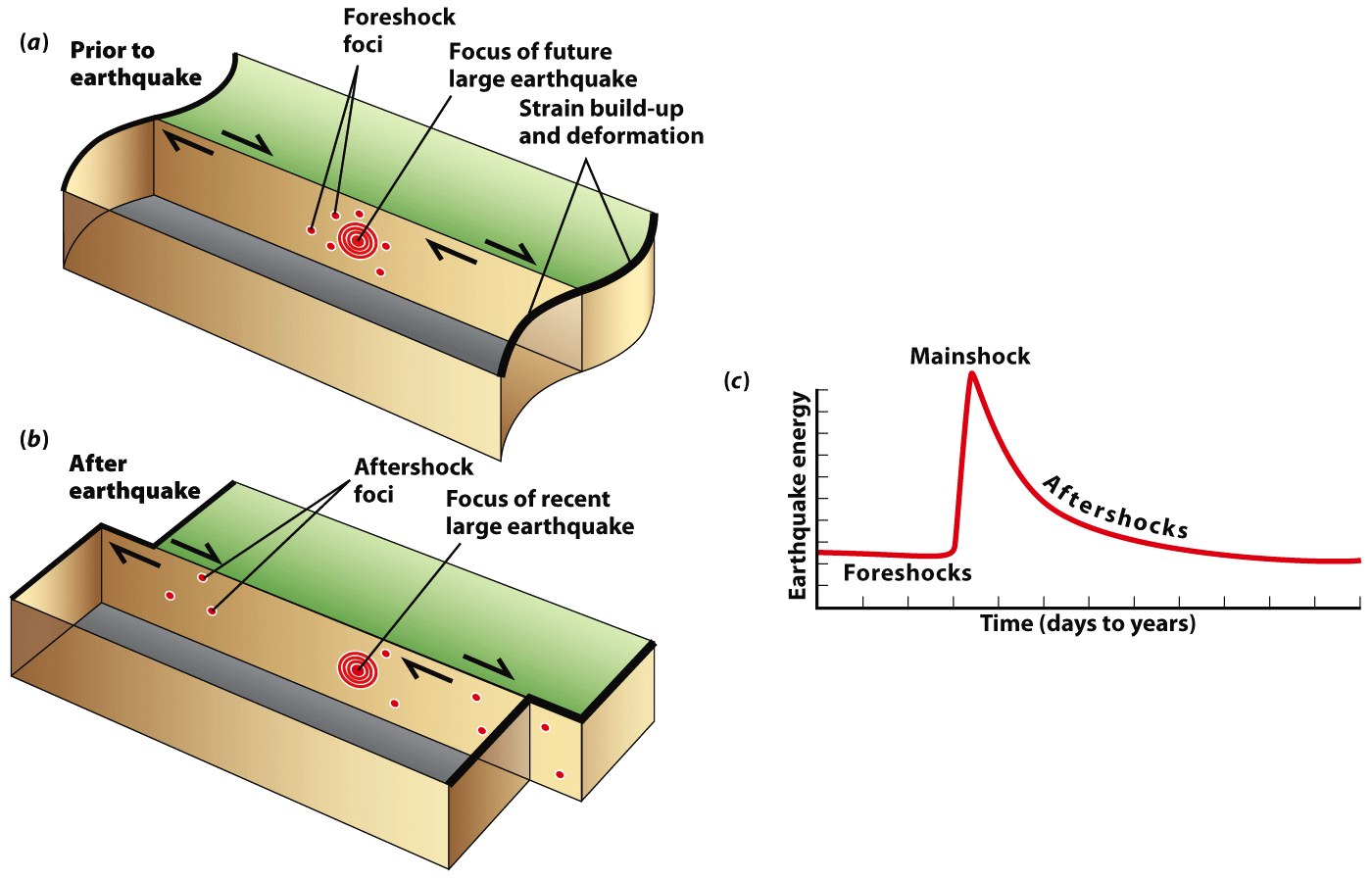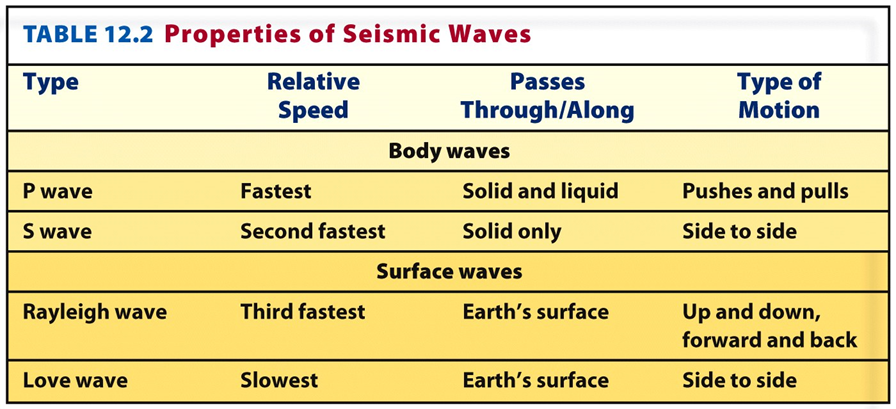Seismology
What Happens During an EQ?


Seismic Waves
There are two main types of seismic waves:
- Surface waves
- Rayleigh waves are a seismic surface wave causing the ground to shake in an elliptical motion
- Love waves are a surface wave having a horizontal motion that is transverse (or perpendicular) to the direction the wave is traveling
- Body waves
- P waves are also called Primary waves; they move with a push-pull motion, changing the volume of the intervening material. P waves travel about 1.7 x faster than S waves
- S waves move at right angles to their direction of travel and travel only through solids. They have a slower velocity than P waves and a slightly greater amplitude than P waves

Seismographs are machines that records the movement of Earth. The record it produces is called a seismogram. Scientists can use the seismogram to determine the size or magnitude of the earthquake.
Measuring Earthquakes
There are two measurements scientists can use to describe the size of an earthquake:
- Intensity – a measure of the degree of earthquake shaking at a given locale based on the amount of damage
- Magnitude – estimates the amount of energy released at the source of the earthquake
Intensity Scales
The Modified Mercalli Intensity Scale was developed using CA buildings as its standard. The scale uses rates from I (not felt) to XII (total damage). There are many factors that contribute to the intensity of the earthquake, and the destruction caused at a locale may not be a true measure of the earthquakes actual severity
Magnitude Scales
The Richter magnitude is a concept introduced by Charles Richter in 1935 and is based on the amplitude of the largest seismic wave recorded and accounts for the decrease in wave amplitude with increased distance. This scale is used primarily for local/nearby earthquakes (ML)
The Moment magnitude scale was developed to more adequately estimate the size of very large earthquakes. The earthquake's magnitude is derived from the amount of displacement that occurs along a fault. This is the scale most often used by seismologists (MW)

